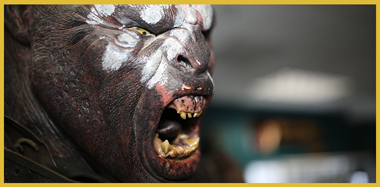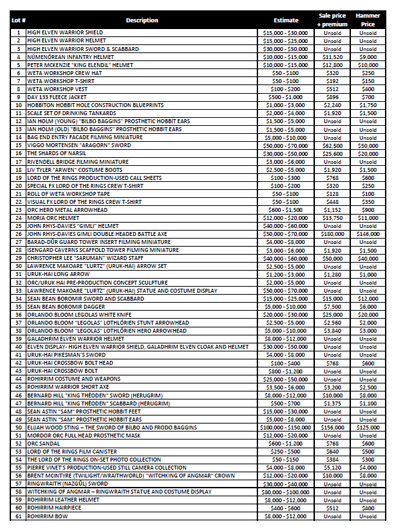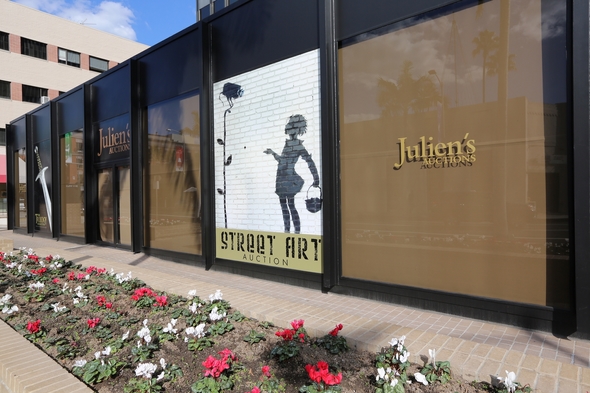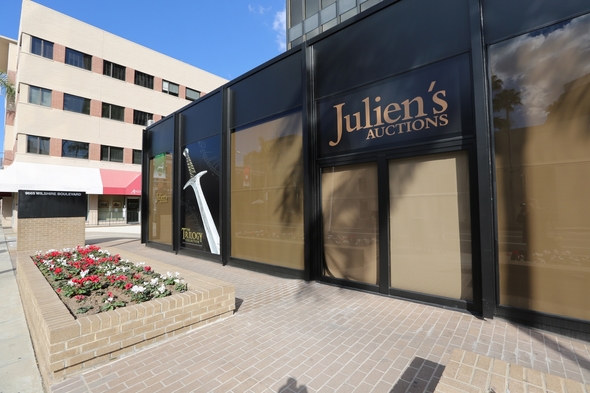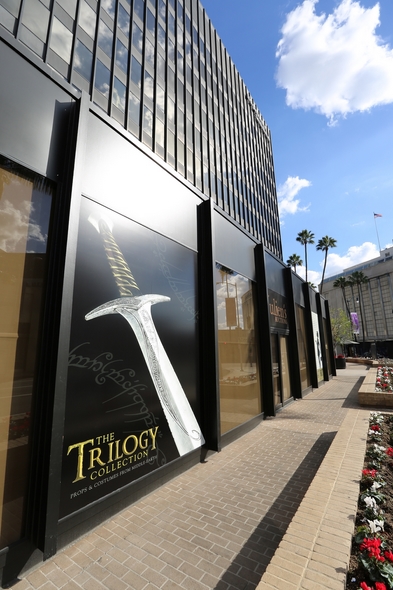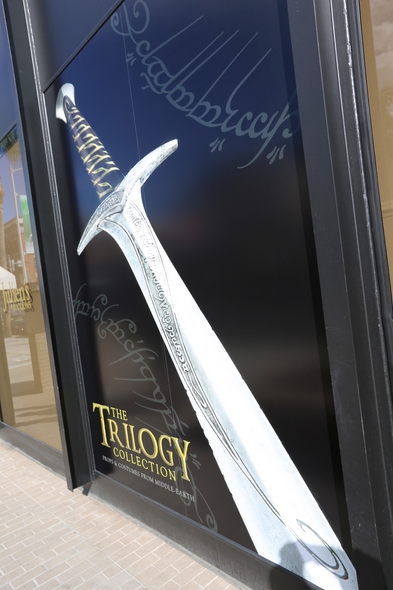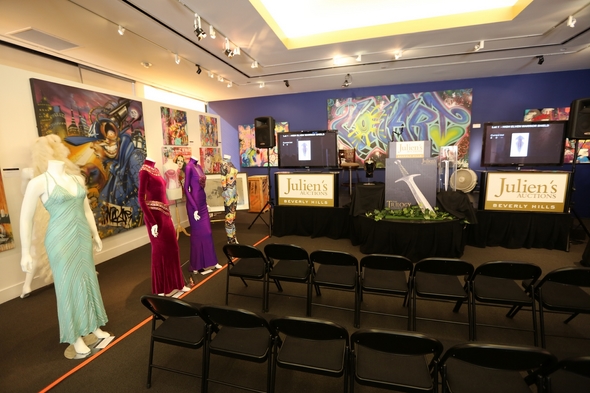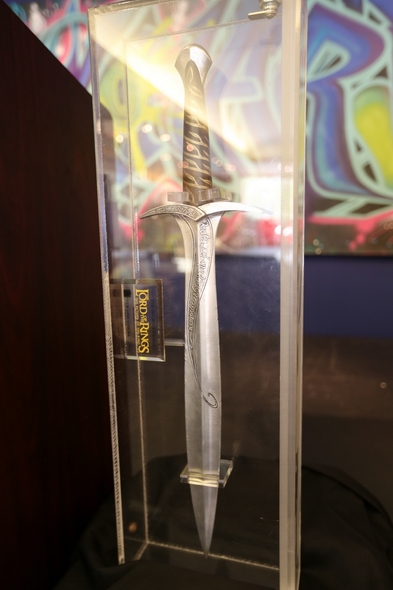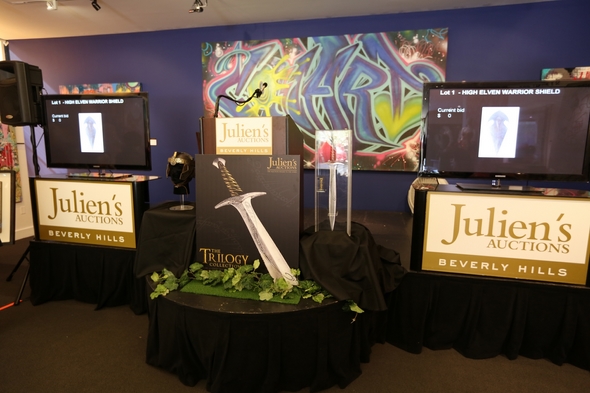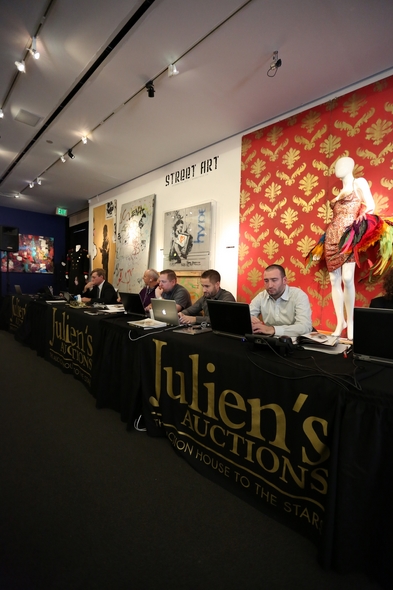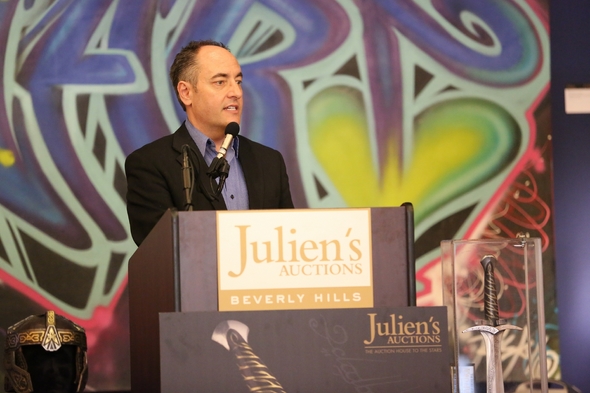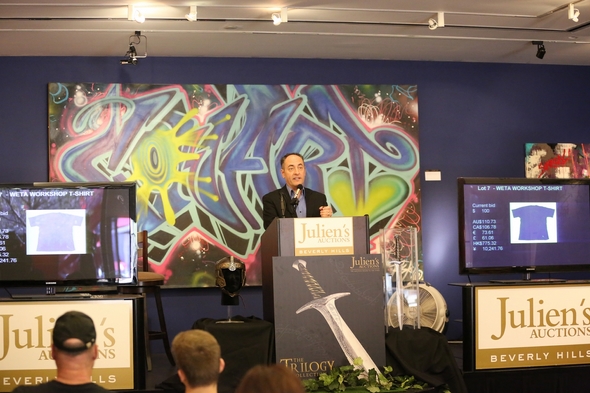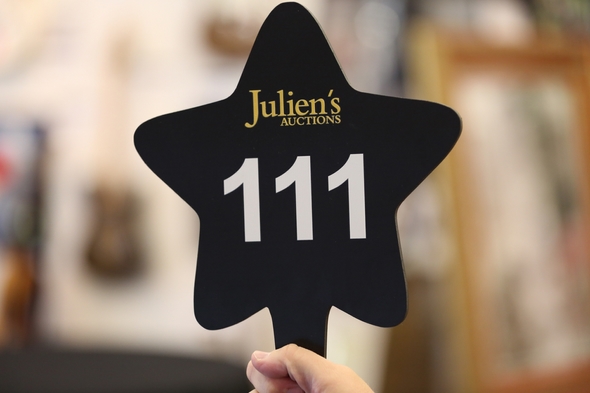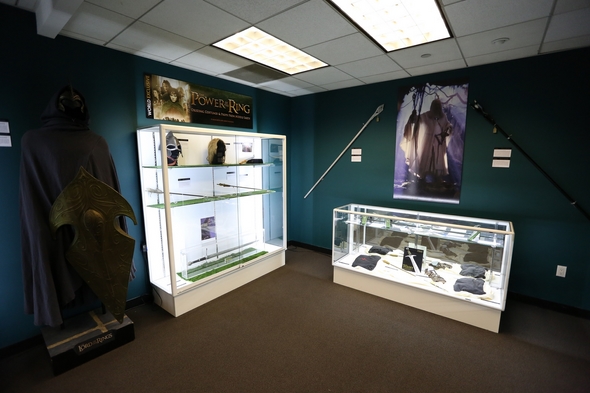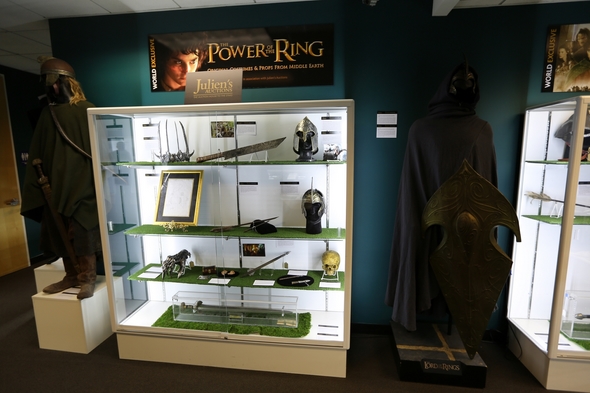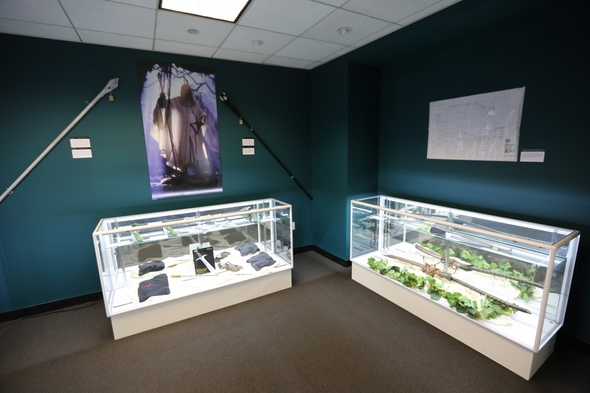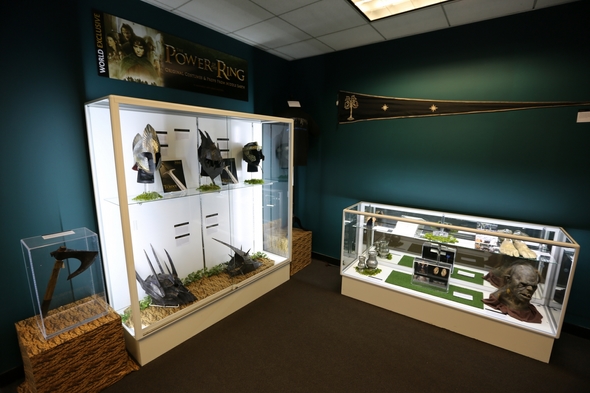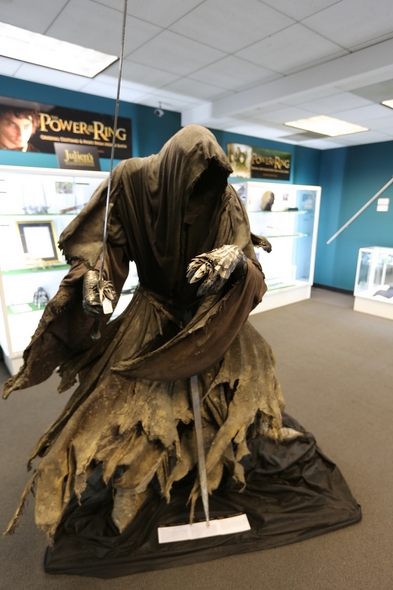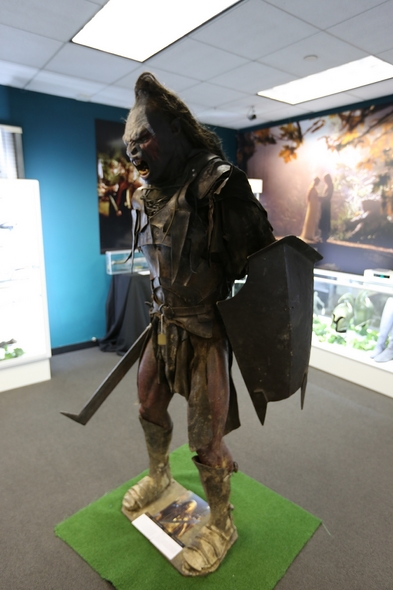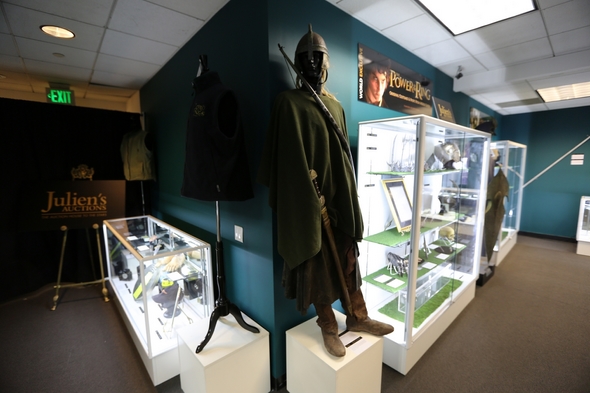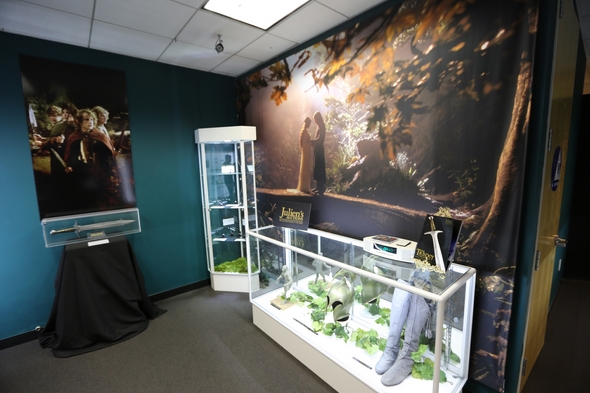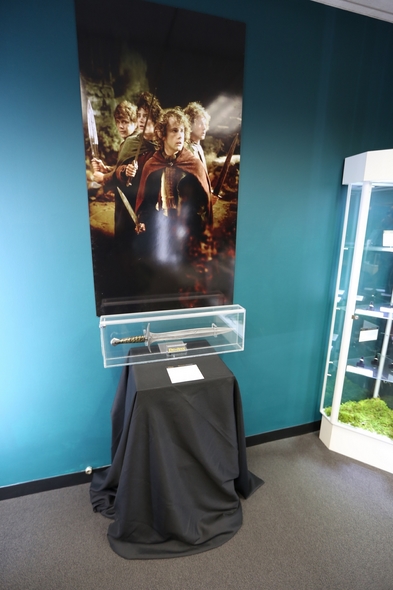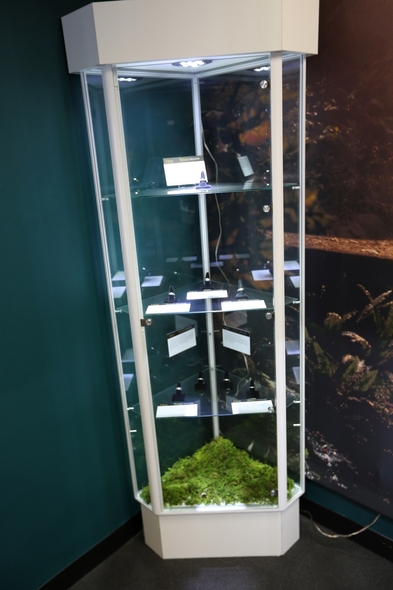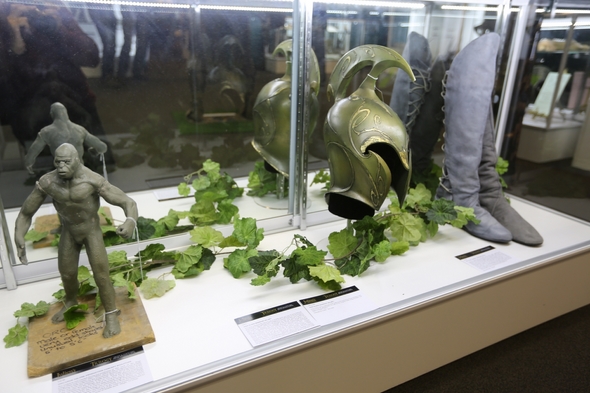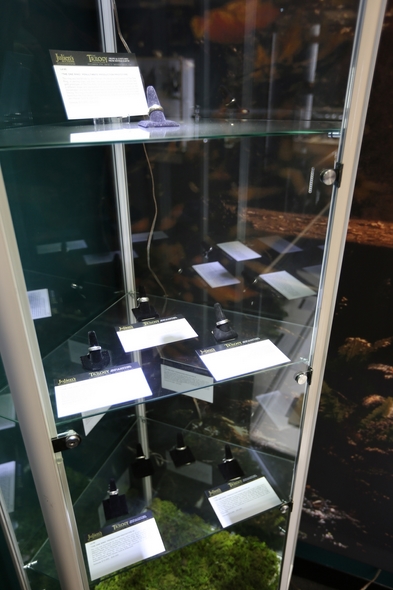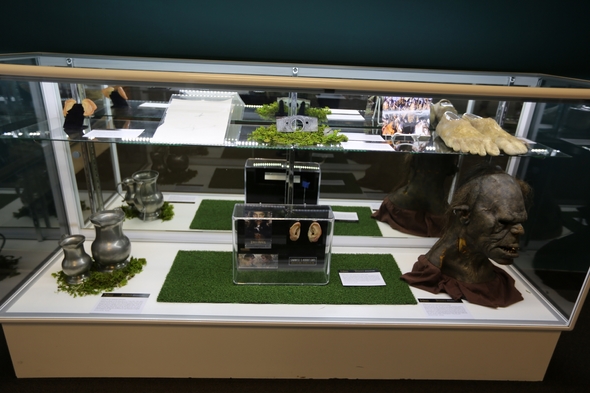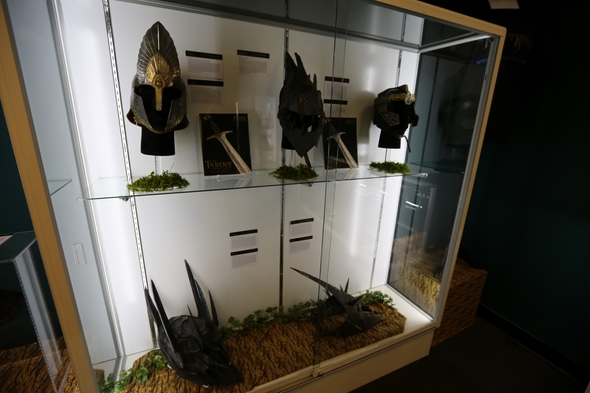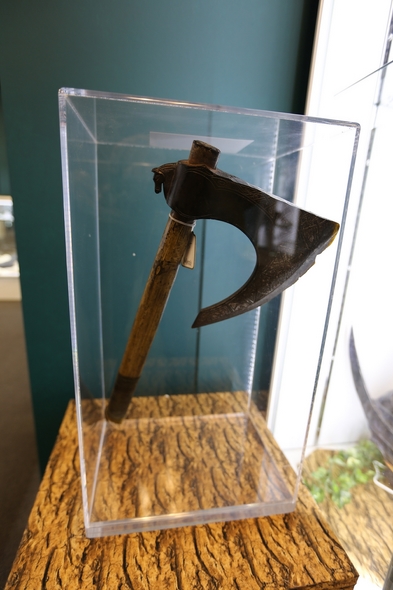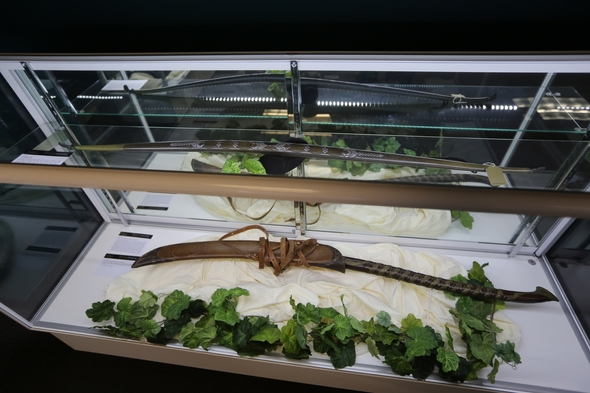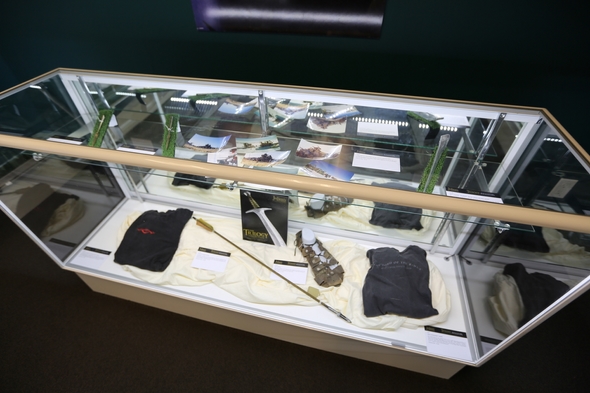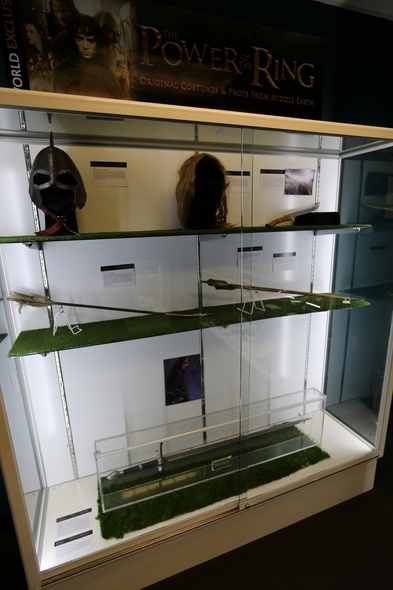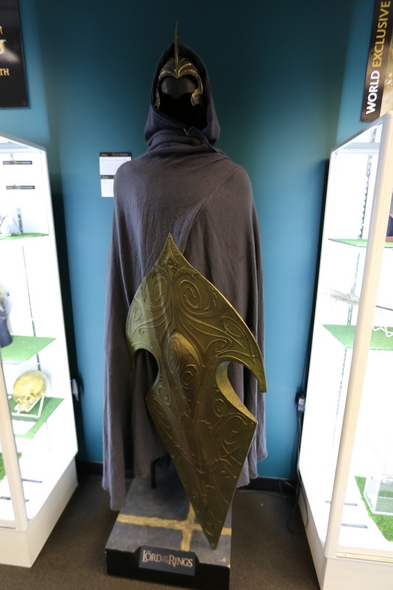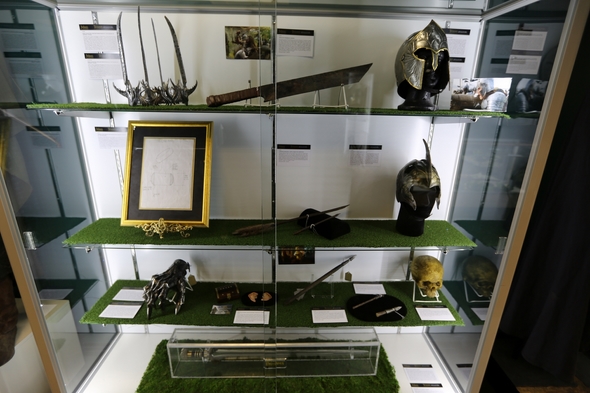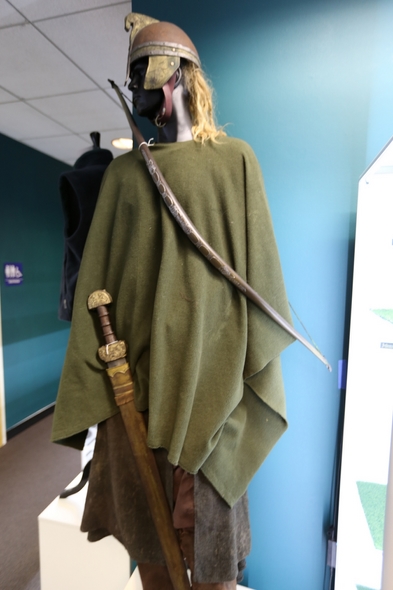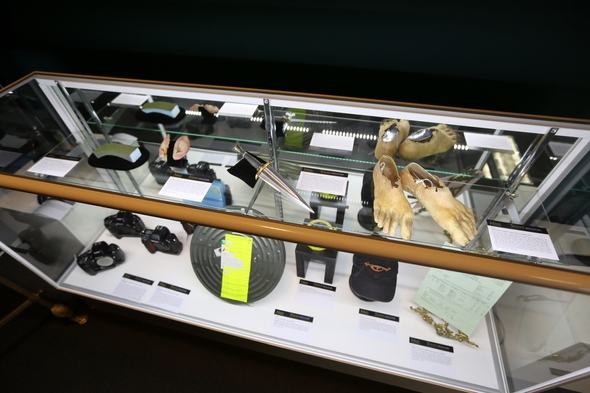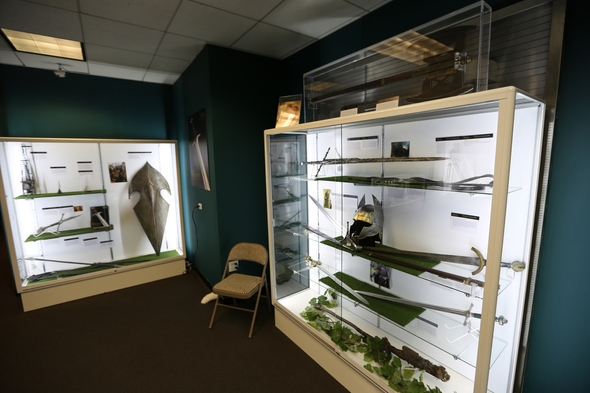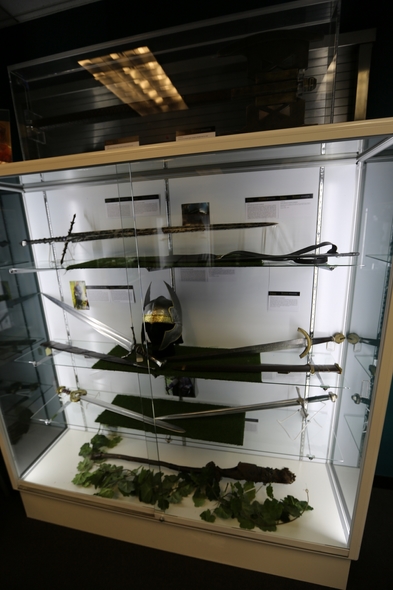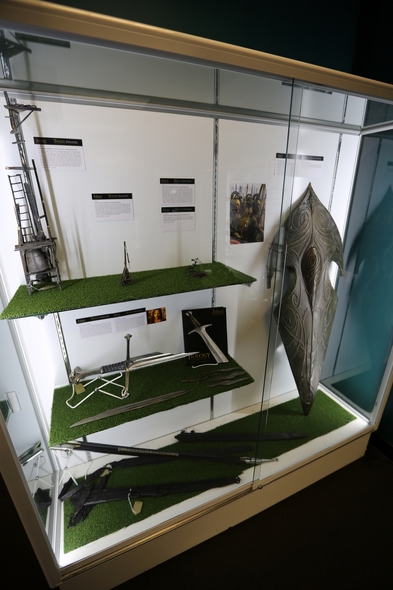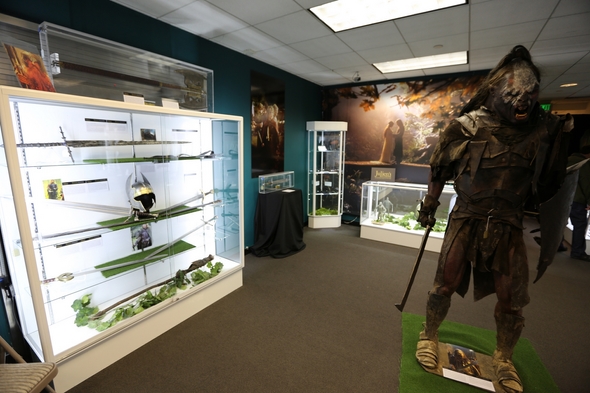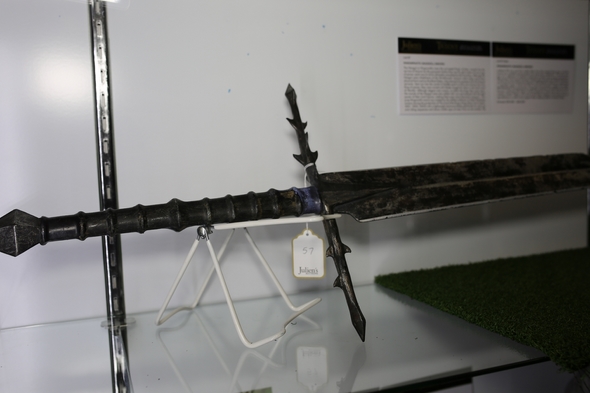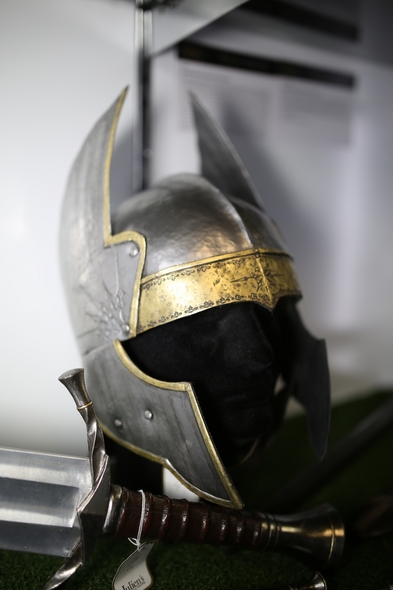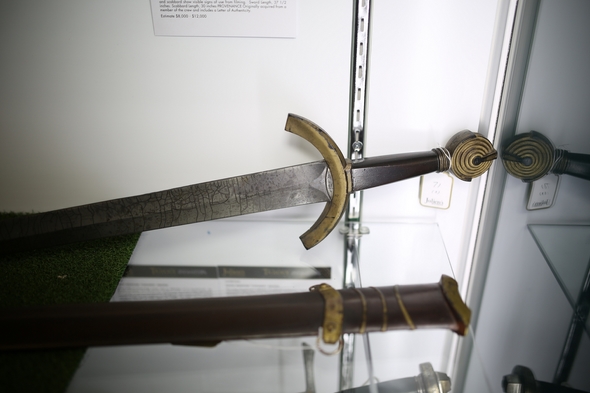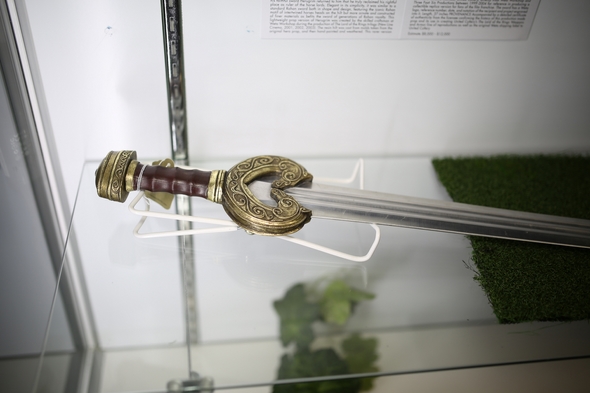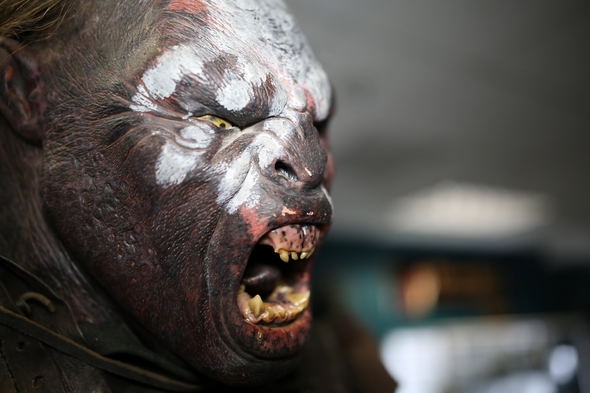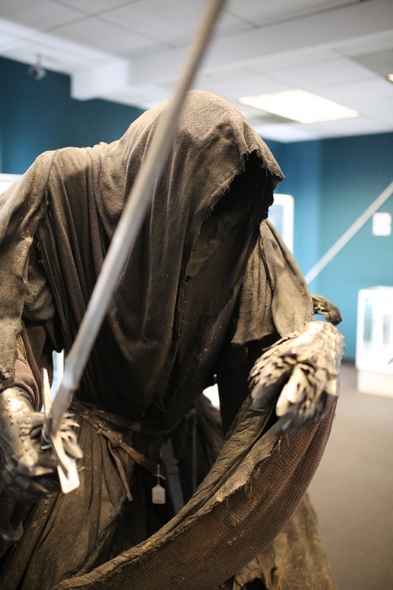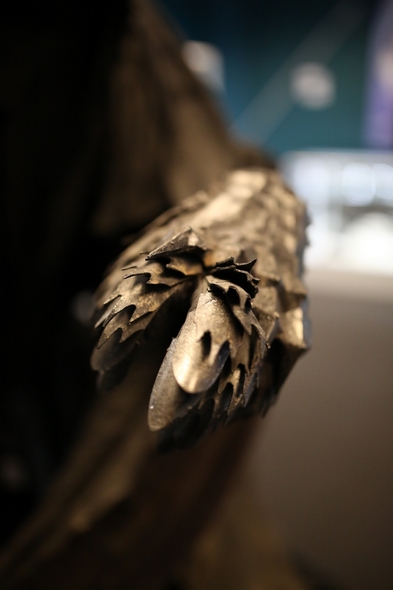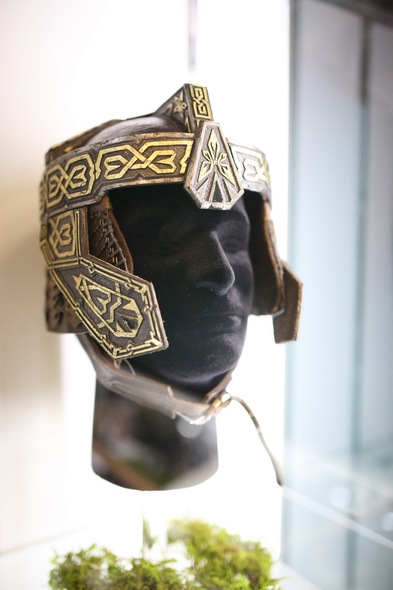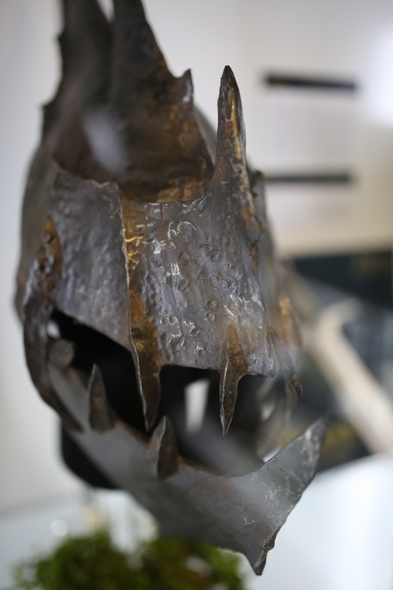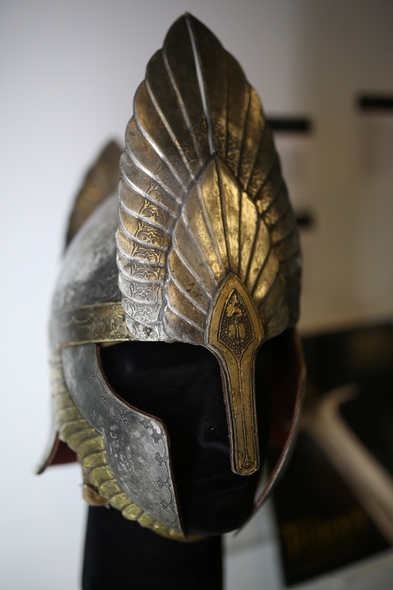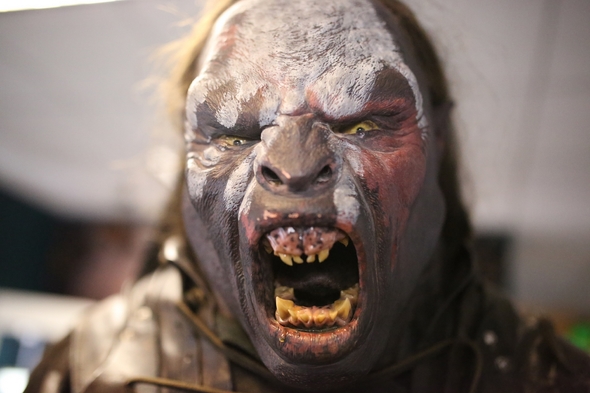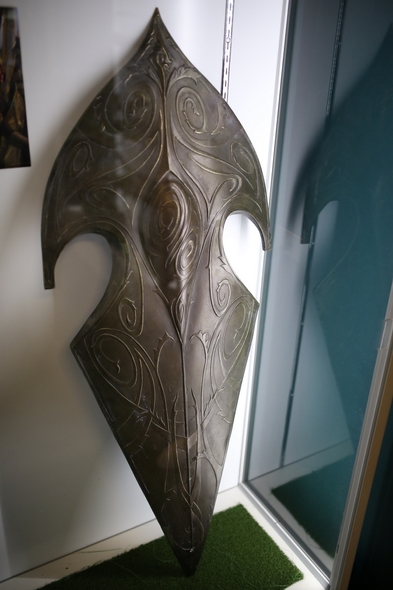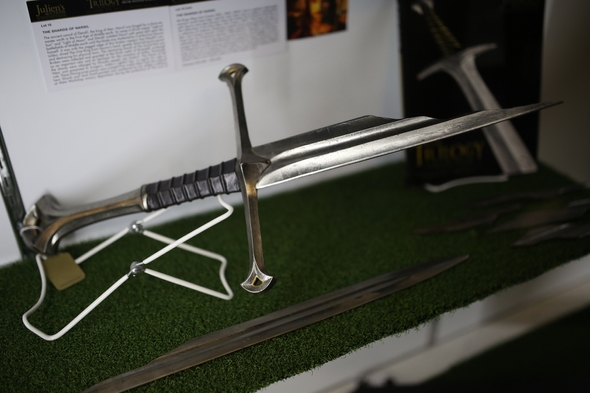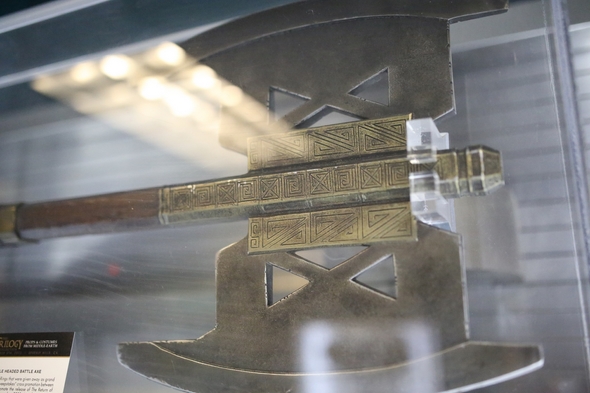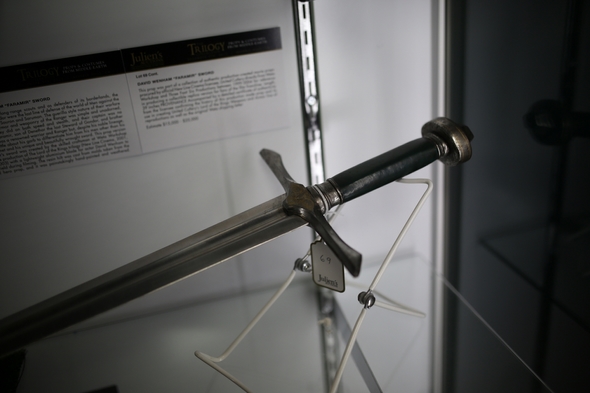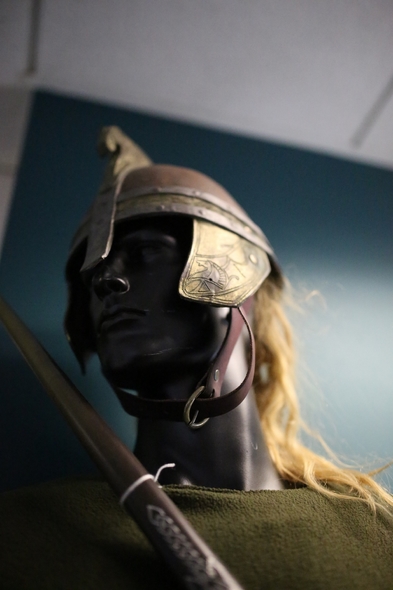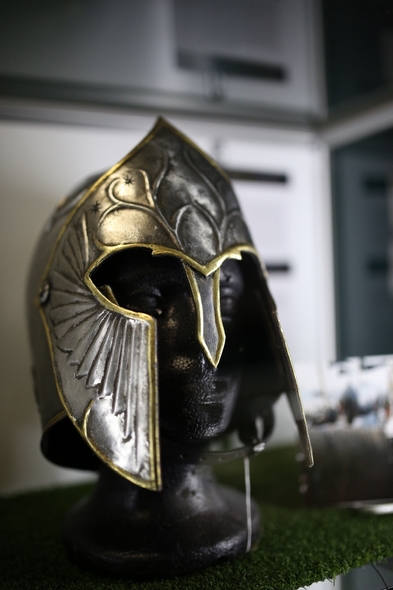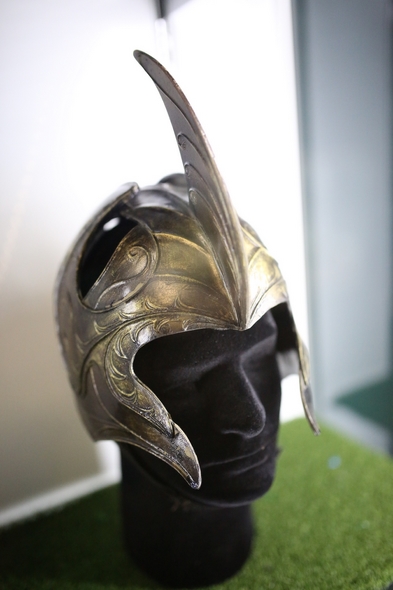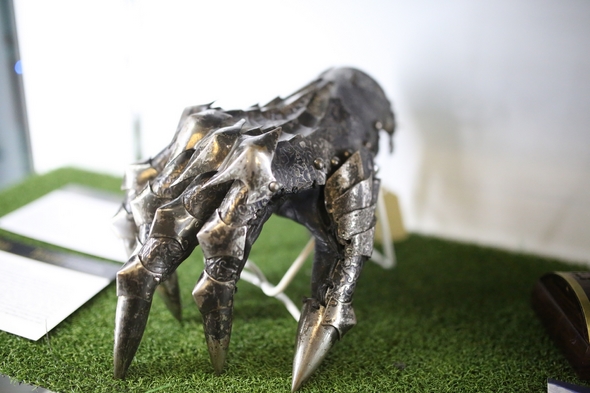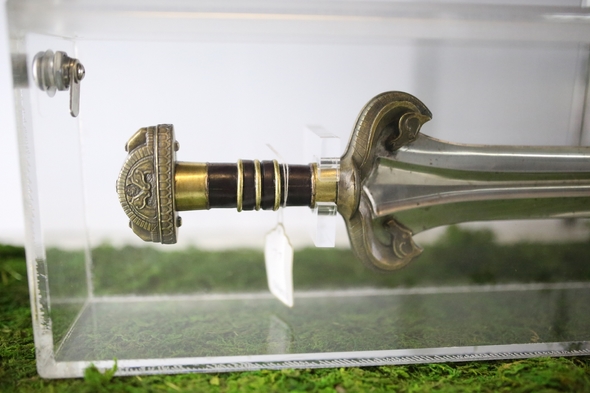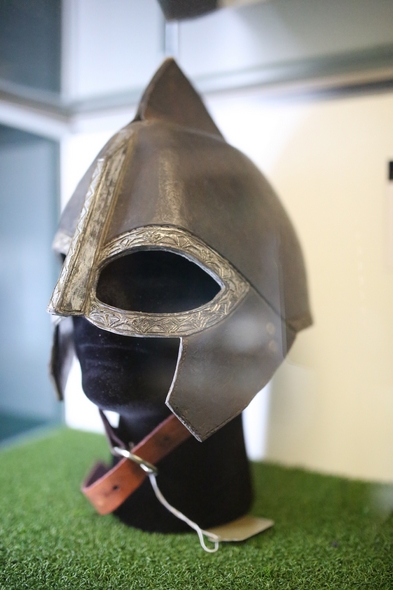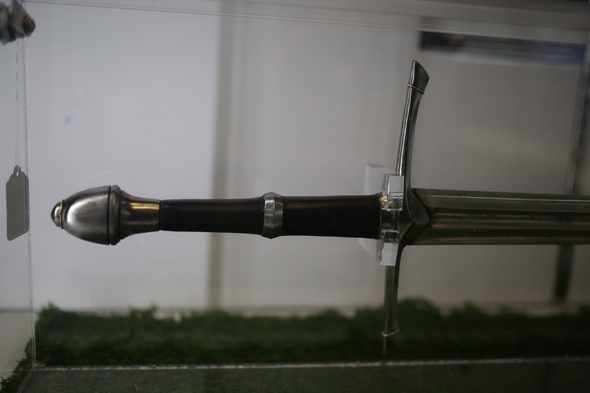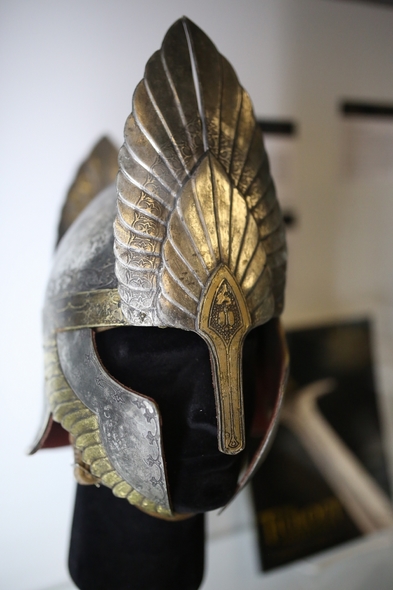As noted in my interview with Troika Brodsky, the owner of the Lord of the Rings collection consigned to Julien’s Auctions, we have been friends for around a decade, so I was particularly interested in this auction. Julien’s Auctions held their “The Trilogy Collection: Props and Costumes from Middle-Earth” sale event this past Thursday, which featured 92 lots of original production assets from the Lord of the Rings trilogy of films made by Peter Jackson. I went down to Beverly Hills to attend the auction, so I thought I would share some thoughts and observations on the sale.
Since the catalog has been available as a free digital download in PDF format, anyone can see that it was very well done. This definitely carried over into the actual presentation of the pieces themselves in the Julien’s Auctions showroom in Beverly Hills.
The collection had its own dedicated room at their facility, with most of the pieces behind glass in well lit display cases.
The two full-sized figures staked out their own space in the middle of the room.
The highlights of the collection – the four New Line/Hasbro Sweepstakes prizes – were encased in the same acrylic display cases in which they were sent out to the original winners of that contest back in 2004.
As a funny aside, I was talking with an impressed collector there who had previewed this collection earlier in the week, and he drew a comparison with a real world impression from an experience at a competing auction with one of their own sale events. He had attended this other entertainment memorabilia auction and he came across employees cracking a bullwhip attributed to the Indian Jones franchise behind the scenes, out of sport.
In contrast to that experience at the other auction house, when asked of those on staff at Julien’s if he could inspect certain pieces, they wore white gloves and would carefully take the material out of the cases and hold the pieces out for examination, but not let the prospective buyers touch any of the items themselves.
Unfortunately, one of the 92 items in the collection took some cosmetic damage in its transit back from the exhibition in Ireland, which was disclosed as part of the auctioneer’s lot amendment announcement prior to bidding.
Since it was a stand alone auction (with an auction for the unrelated Bansky Street Art Auction occurring later that night, and additional auctions Friday and Saturday), this sale began promptly at 2:00 and ran about an hour and a half, so about one minute per lot.
The auctions at Julien’s take place in their showroom, with the auctioneer and monitors at the back of the room, manned phone banks and computers along one side for phone and Internet bidders, and chairs out front on the floor for those bidding in person.
With the terms of this sale, there was a 25% Buyer’s Premium on items $100,000 or less and 20% for those over $100,000; an additional 3% added to any lots won using online bidding with Julien’s Live.
All items were subject to a confidential reserve, which did not to exceed the low estimate (in some cases it was the low estimate; in some cases it was lower than the low estimate yet higher than the opening bid amount).
As mentioned in my interview with Troika, I am not personally a fan of the films (having only viewed one and a half of the three LOTR films), though I certainly appreciate the artistry and popularity of them. But, as such, I don’t have any particular observations of the pieces as they relate to the films. However, the work done by Weta Workshop on many of these pieces is extraordinary, and truly must be seen in person to be appreciated.
Profiles in History set a benchmark with its sale of the Legolas bow (also one of the eight New Line / Hasbro Sweepstakes prizes), which sold in their December auction last year for $372,000 with Buyers Premium.
Of course, being the first premium piece offered for sale in a high profile auction typically will lead to the highest result for a franchise, so I was uncertain as to how values would compare with nearly 100 pieces coming to market at once, with a handful of them matching the quality of the Legolas bow (four of the ninety two pieces were those New Line / Hasbro Sweepstakes prizes as well).
I have in the past 18-24 months been on my personal mantra of encouraging those in the marketplace (both consignors and auction houses) to avoid what I’ve come to call “jackpot” reserves and estimates – putting things up for sale with a high estimate and reserve, in many cases looking for just one buyer to pull the trigger at the reserve, rather than letting the competitive market set the price in an open auction.
While the pieces in this Julien’s sale were conservative in one respect – relative to the result with the Legolas bow – they were still very high numbers, which has specific risks and rewards.
I had hoped this sale would instead follow the Christie’s 40 Years of Star Trek model, which featured great material with very low reserves and estimates, which brought in a huge pool of buyers. In that sale, most everything did exceedingly well, as the market dictated the price, rather than setting a very high value range and looking for that buyer at that price.
My feeling is that the overall market is in a downward trend currently, and there is some blow back to high reserves and estimates, as it is a different market today compared with even two years ago.
In any event, it is just my personal opinion, but I think the results would have been better with a lower point of entry across the board and trusting that the market would see the value in these wonderful pieces. I think it would have brought out a larger pool of buyers and fans, eager to participate in the event, rather than being positioned as a collection seeking out a handful of very high end buyers. I know that Troika had a significant investment in the collection though, and wanted to protect that investment, and had a completely different perspective on this facet of the auction. So whatever the result, I can only speculate about whether a different approach would have improved the results or not.
Getting to the actual auction itself, it opened with three “high elven pieces” (a shield first, then a helmet, then a sword and scabbard combo), all of which had a $15,000-$30,000 estimate and all of which were passed/closed unsold. Obviously, starting with higher end, high reserve/estimate pieces set a tone and brought momentum to a stalled state, which is not an ideal way to kick off an auction.
For those who have never attended a live auction before, when there is a confidential reserve (the minimum price at which the consignor gives permission to the auction house to sell the item), the minimum bid is usually lower (in the case of this sale, half of the low estimate) to get some action and momentum going on the lot. As a third party bystander, it is a bit disconcerting to see the early, pre-reserve bidding (usually the reserve is the low end of the estimate, but sometimes it is lower), as you don’t know what is “real” and what is advance bidding (the auctioneer taking bids that might not be actual potential buyers bidding, to get to one bid increment below the confidential reserve).
As raised in an article earlier this week, Heritage Auction Galleries is the only auction I’m aware of in this space that has multi-consignor, no reserve auctions with the minimum bid essentially being the reserve (so there is no mystery as to what the reserve is – if there is one bid, there is a sale). Though other auction houses do this with single consignor auctions, as there can be more flexibility with just one decision maker – the consignor of an entire catalog of items.
There are different arguments made both pro and con for each method of disclosing or not disclosing the reserve, but I greatly prefer the method by which everyone knows the starting point at which an item can be bought and sold, rather than a guessing game, as it provides a greater level or transparency.
Getting back to the auction, the two items following the first three lots passed were two helmets with $10,000-$15,000 estimates, and both sold for $9,000 and $10,000 (prices are prior to adding Buyer’s Premium).
Some crew material that followed did very well with regards to their estimates, though they were just in the double and triple digits for the most part.
Interestingly, all of the prosthetics throughout the auction were passed (two sets of ears; four sets of feet). These were some of the pieces well covered in the extensive worldwide media campaign.
The first “big” piece to come up and sell was the Viggo Mortensen “Aragon” sword, which was one of the four New Line / Hasbro Sweepstakes pieces (which was actually called the “Win The Sword of Aragon Sweepstakes”). It sold for a hammer price of $50,000, which was the low estimate.
Further into the auction, the biggest sale of the day was John Rhys-Davies “Gimli” double headed battle axe, another New Line / Hasbro Sweepstakes prize. In a bidding war between two phone bidders, the hammer finally came down at $180,000 before Buyer’s Premium (outpacing the $50,000-$70,000 estimate).
The item that I thought would do the best (again, not having seen all of the Trilogy, so my opinion here is moot) was the Elijah Wood “Sting” sword – the sword of Bilbo and Frodo Baggins. Another New Line / Hasbro Sweepstakes piece, it was also the catalog cover item. This one closed out with a hammer price of $125,000, following bids on the phone and in the room.
Two of the coolest pieces – the Ringwraith statue and the “Lurtz” statue – were passed, not reaching reserves. Other high end pieces that didn’t meet reserve were Gandalf’s wizard staff, the Eowyn sword (the only New Line / Hasbro piece that didn’t sell), and the “One Ring” master production prototype.
Even with 52 of the 92 lots selling, the total hammer price was $611,650 and the total sale including Buyer’s Premium was $765,624. The average price per lot sold was $11,763.
Special thanks to my friend, Rik, who put together a helpful spreadsheet, that I customized and converted to PDF format, which can be found below (LINK):
Below are photos from the event:
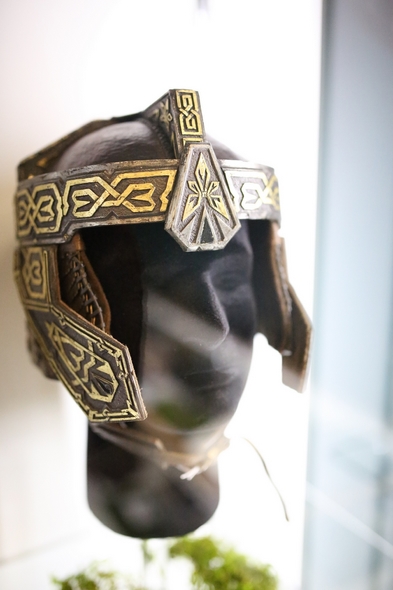
Jason DeBord

